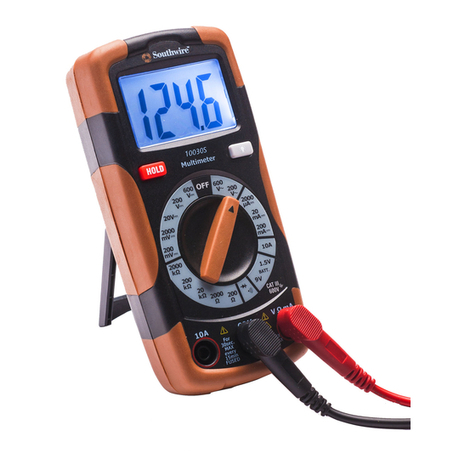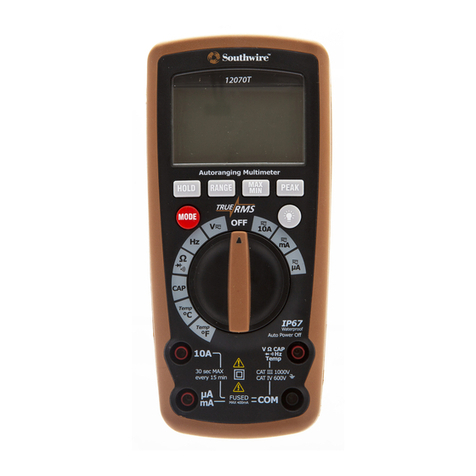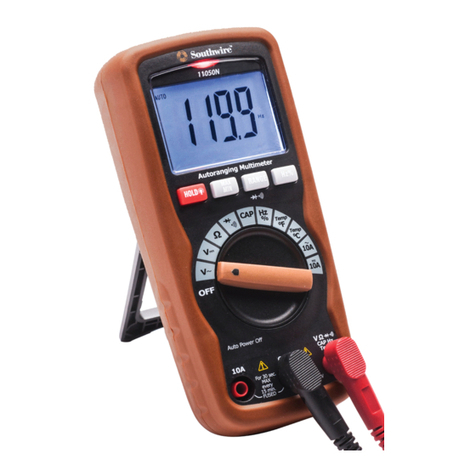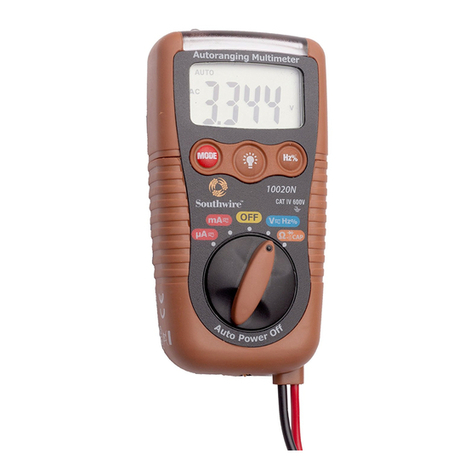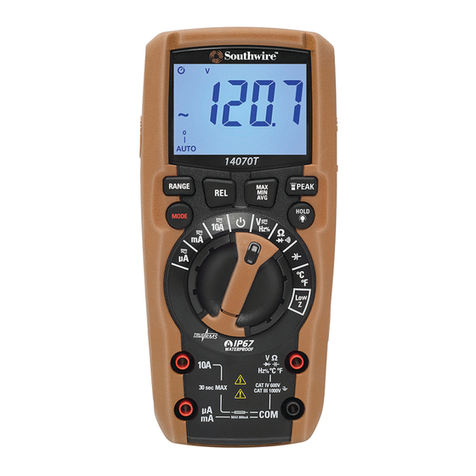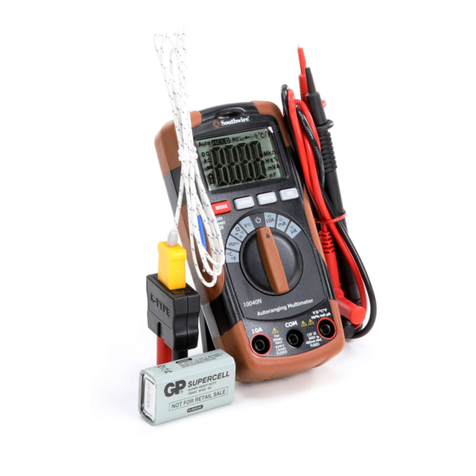Introduction
WARNINGS
1
The Southwire 10040N multimeter measures AC and DC voltage and
current, resistance, capacitance, frequency, duty cycle and tempera-
ture. It also tests continuity, diodes, and has a built-in non-contact
AC voltage detector. Readings are displayed on a large backlit LCD.
This meter is fully tested and calibrated and, with proper use, will
provide many years of reliable service.
• Read, understand and follow the Safety Rules and Operating
Instructions in this manual before using this meter.
• The meter’s safety features may not protect the user if not
used in accordance to the manufacturer’s instructions.
• Ensure that the test leads are fully seated in the input jacks and
keep fingers away from the metal probe tips when taking
measurements.
• Before changing functions using the rotary function switch,
always disconnect the test leads from the circuit under test.
• Use only UL listed test leads with the proper safety category rating.
• Comply with all safety codes. Use approved personal protective
equipment when working near live electrical circuits - particularly
with regard to arc-flash potential.
• Use caution on live circuits. Voltages above 30 V AC RMS, 42 V
AC peak, or 60 V DC pose a shock hazard.
• Do not use meter or test leads if they appear damaged.
• Do not use the meter if it operates incorrectly. Protection may
be compromised.
• Verify meter’s operation by measuring a known voltage.
• Do not use the meter in wet or damp environments or during
electrical storms.
• Do not use the meter near explosive vapors, dust or gasses.
• Do not use the meter if it operates incorrectly. Protection may
be compromised.
• Replace the battery as soon as the low battery warning appears.
2
Input Limits
Function Maximum Input
Voltage AC or DC
µA/mA AC or DC
10A AC or DC
Resistance, Continuity, Diode
Test, Frequency, Duty Cycle
Temperature
600V
400mA, 250V
10A AC or DC (30 seconds max every
15 minutes), 250V
250V
250V
General Specifications
Insulation
Overvoltage Category
Display
Polarity
Continuity
Overrange
Low Battery Indication
Measurement Rate
Auto Power Off
Operating Environment
Storage Temperature
Operating Altitude
Pollution Degree
Battery
Dimensions:
Weight
Safety
Class2, Double insulation
CAT III 600V
4000 counts LCD display with function indication
Automatic, (-) negative polarity indication.
Audible indication if the resistance is approximately 30Ωor less
“OL” mark indication.
The “ ” symbol is displayed when the battery voltage
drops below the operating level.
2 times per second, nominal.
Meter automatically shuts down after approx. 15 minutes of inactivity.
32° to 104°F (0°C to 40°C) at < 80 % relative humidity.
14° to 140°F (-10° to 60°C) at < 80 % relative humidity.
7000ft (2000m)
2
One 9V battery, NEDA 1604, IEC 6F22
5.4” x 2.7” x 1.5” (138 x 68 x 37mm)
0.46lb (210g)
For indoor use and in accordance with Overvoltage Category III,
Pollution Degree 2. Conforms to UL 61010-1 v.2
• Do not apply voltage or current that exceeds the meter’s
maximum rated input limit.
